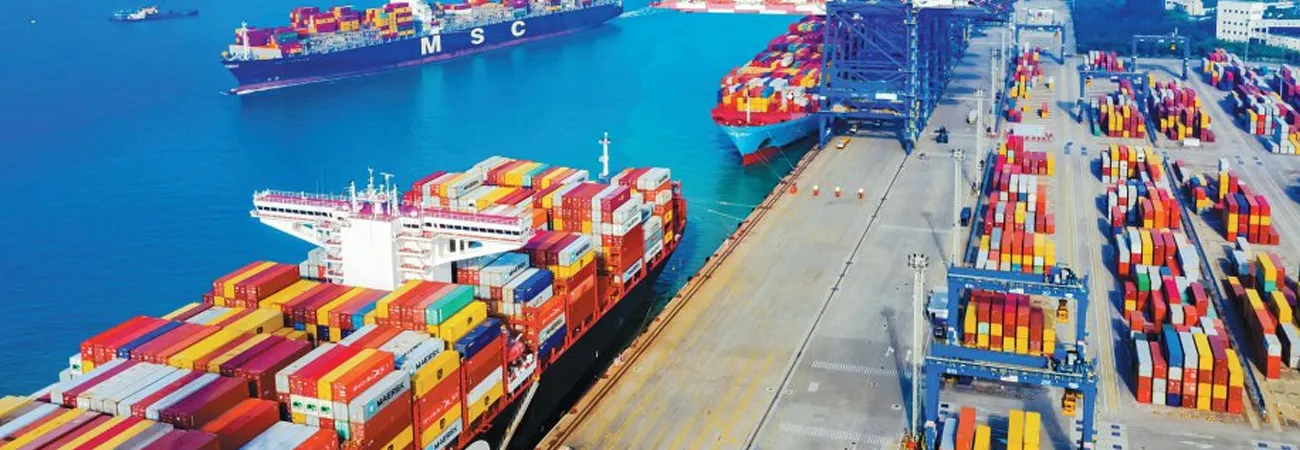i ECONOMY
Pakistan International Bulk Term Limited's net loss clocked in at Rs2.155 billion during FY23 compared to Rs632.39 million in FY22, reflecting a substantial decline of 240.9%. As a result, the company's loss margin rose to 23.76% in FY23 from 6.01% in FY23. The company attributed this to currency devaluation, high interest rates, and high inflation. The net revenue and gross profit collapsed by 13.7% and 43.32%, respectively, in FY23. The company ended the year with Rs9.07 billion net revenue in FY23 from Rs10.5 billion in FY22. Whereas, the gross profit stood at Rs1.59 billion in FY23 compared to Rs2.8 billion recorded in the same period last year. The company's gross profit margins fell from 26.85% in FY22 to 17.64% in FY23. On the expenses side, the company saw a marginal increase of 0.68% to Rs583.57 million in FY23. Other income as a whole contracted by 18.98% to Rs179.03 million in FY23 from Rs220.9 million in FY22.
The company's loss before tax spiked by a whopping 963.32% to Rs3.12 billion in FY23 to Rs294.3 million registered in the same period last year. Loss per share of the company stood at Rs1.21 in FY23 against Rs0.35 in FY22. Profitability Ratios Analysis Over time, the company experienced a range of outcomes, including both positive and negative values, which caused fluctuations in the profitability ratios. Between 2018 and 2023, the overall gross profit ratio increased from -42% to 18%. The company was unable to achieve high sales prices in 2018 compared to its cost of goods sold. However, in 2020, the company recorded its highest gross profit ratio of 32%. In 2018, 2019, 2022, and 2023, the company's net loss after tax to turnover was 34%, 30%, 9%, and 24%, respectively. This shows that over time, the company's revenue was lower than its total expenses. Nonetheless, the company recorded net profit to turnover of 12% and 17% in 2020 and 2021.
The return on equity and return on shareholders' funds showed a similar pattern, continuously declining and indicating insufficient profit generation to meet the operating costs. Liquidity Ratios Analysis A current ratio that is between 1.2 and 2 and above is regarded as safe, while one that is below 1.2 puts the company at greater risk of not being able to pay its short-term obligations. As the current ratio continued to be below 1.2, the company demonstrated an increased risk of being unable to pay its debts over time. The company recorded its highest current ratio of 1.91 in 2022. From 2019 to 2023, the quick ratio did not rise above 1, indicating the company's diminished capacity to meet its immediate obligations. From 2018 to 2023, the company's cash to current liabilities and cash flow from operations to sales both stayed below 1, indicating that it has more debt than cash. Capital Structure and Activity / Turnover Ratios Analysis Between 2021 and 2023, the company's debt-to-equity ratio decreased.
A higher debt-to-equity ratio indicates that the majority of the company's assets are financed by borrowing, while a lower ratio indicates that shareholders' equity is used to finance the majority of the company's assets. From 2018 to 2020, the debt-to-equity ratio stayed above 1, suggesting that more assets were financed through borrowing. A company's ability to use its profitability to pay interest on outstanding debts is gauged by the interest coverage ratio. An increased interest cover ratio suggests a more robust ability to finance interest payments. It is deemed hazardous for the company to pay interest on loans with a ratio of less than 1.5. The company's interest cover ratio for 2020 and 2021 is more than 1.5, indicating the company's improved financial standing. However, it stayed negative in the subsequent years, indicating increased financial risk. Similarly, the company's total assets turnover ratio continued to be below 1, indicating a lower revenue generation from company assets.
Credit: Independent News Pakistan (INP)









